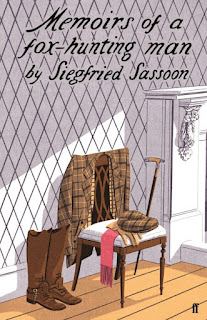Painting the Soul
In October 1818 John Keats wrote to a friend with a sparkling revelation: “[t]hat which is creative,” he declared, “must create itself”. A hundred years on, this Keatsian ideal ran strongly through the tides of European thought — most prominently in the works of the Irish writer, James Joyce.
Joyce himself bought Keats’ idea and immersed himself in a self-begotten exile that lasted for the rest of his days, departing Ireland for the continent to formulate and sustain his own artistic identity. He viewed himself as a herald to the literary race, an ingrown vocational calling he analysed and poked at in his first novel, A Portrait of the Artist as a Young Man (1916).
Stephen Dedalus, the main character, is a surrogate for the novelist’s youthful ambitions — the dedicated writer constantly at odds with an Irish society on the brink of vast political change, always feeling some stirring in the soul which prods him toward his ultimate destiny: the life of a devoted artist.
The novel brims with a spiritual discourse which rises from every page. Stephen faces various temperaments among his peers — from severe spiritualists to feverous nationalists — until he finds his true self, pursuing the everlasting quest for self-creation, refuting the claims of his Jesuit upbringing and turning himself into a “priest of [the] eternal imagination”, a monk of his own self-styled monastery (p. 240). In Stephen’s world, the business of art is serious: it is a spiritual calling.
A Portrait is the novel as evolution of style, which reflects the learning curves that Dedalus experiences on his journey. First, we live through the nursery-level storytelling of Stephen’s baby days (“Once upon a time . . . there was a moocow”); then, we grow into the overwritten passages of Stephen’s mind (“Heavenly God! cried Stephen’s soul, in an outburst of profane joy”), and finally, we open onto the transcendent language of Stephen’s burgeoning artist-hood (“I go to encounter . . . and to forge in the smithy of my soul the uncreated conscience of my race”). Witnessing this is a beautiful thing; we read on, as the novel grows, and gradually realise Joyce has created a work which pulses and acts like a living thing.
Meditating Language
As Stephen’s quest progresses, his curiosity for language develops. In early passages he is always thinking about words — always contemplating their associations, developing a wider sense of their sounds. For instance when watching a cricket game, he falls into a creative mood. “[The cricket bats] said: pick, pack, pock: like drops of water” (p. 41). Later, the words repeat: “through the quiet air the sound of the cricket bats: pick, pack, pock, puck” (p. 61). This repetition is important; these language games demonstrate how Stephen conceives the world.
Games soon develop into philosophic inquiry — particularly during Stephen’s university days. Discussing his plans for an essay on aesthetics, he talks about the naming of an oil lamp’s components with a university dean — and falls into dispute.
—That? said Stephen. Is that called a funnel? Is it not a tundish?
—What is a tundish?
—That. The . . . the funnel.
—Is that called a tundish in Ireland? asked the dean. I never heard the word in my life.
—It is called a tundish in Lower Drumcondra, said Stephen laughing, where they speak the best English. (p. 204)
The problem is signifier versus signified — the noun, the definite article, we use to refer to things battles it out with the things in themselves. You call it this; I call it that. Only Stephen takes it personally: “My soul frets in the shadow of [the dean’s] language”, he concludes in a famous passage, solemnly stating that he will never consider the dean’s language as his own.
A postcolonial reading suggests Stephen’s reflex for reverse othering — standing up for his Irish way of speaking, specifically the working-class area of Drumcondra, and alienating the dean’s own speech. It all fits into Stephen’s overall frame of existence: the eventual discovery of his own voice, attuned to the will of his artistic autonomy.
SOURCE
Deane, S. (ed), A Portrait of the Artist as a Young Man. By James
Joyce. (Penguin: London, 2000). Pp 329 + xliii.



Comments
Post a Comment